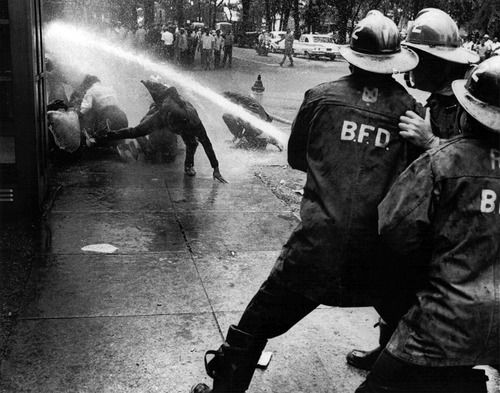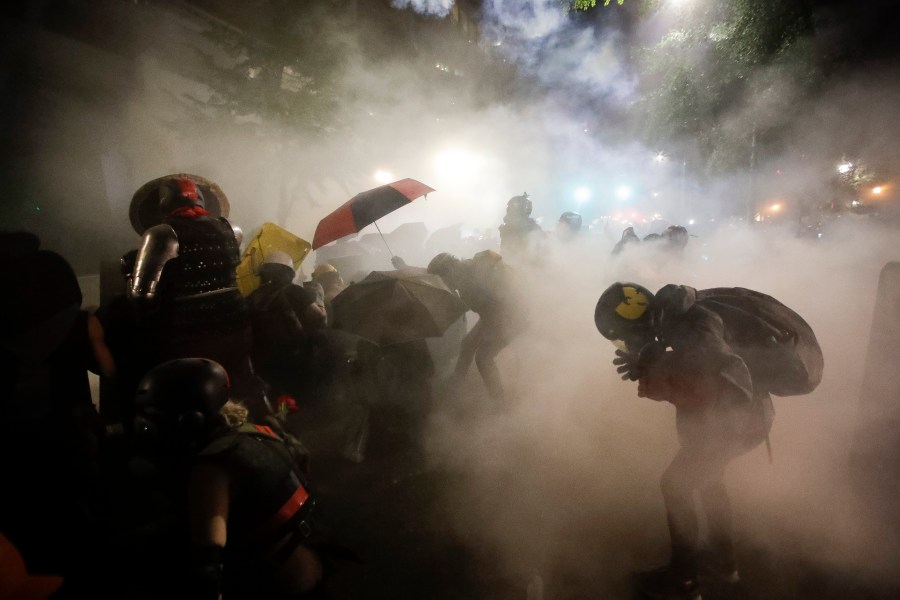PORTLAND, Ore. (KOIN) The discussion stayed mostly civil during an Oregon Legislature Joint Committee on Police Transparency and Use of Force Reform session Wednesday, but a tense moment occurred among Oregon lawmakers in Salem when Sen. Floyd Prozanski mentioned the idea of water cannons as a possible non-chemical alternative to “crowd control” for use by police.
“This is like deja vu back to the ’60s for us who grew up in that era. Water cannons was one of the things that was used at that point in time. And I mean it seems like well maybe that could work but it also seems like it would have a lot of pitfalls,” Prozanski said.
He clarified the question was more directed to law enforcement persons. “I’m not saying that’s the way to do it, but I’m just looking for something outside of the current thinking of use of chemicals to disperse”

Rep. Janelle Bynum then asked a clarifying question, in apparent offense at the evocation of imagery from 1960s protests: “Are we talking about bringing back hoses and dogs?”
Prozanski said he was “very, very frustrated” at Bynum’s response.
Bynum then asked: “Is a water cannon similar to a hose?”
Co-Chair Sen. James Manning Jr. said it is important to make the distinction between “crowd control” and “riot control” in the discussions. “Words are very important,” he said.
“The question is what are the alternatives in terms of riot management–and not crowd control–is a good question,” Manning said.
Rep. Alissa Keny-Guyer chimed in to say she understands how people could be triggered at the proposal of using a water cannon and it also evokes for her imagery of civil rights protests, in which television footage from the time showed water hoses and dogs being directed by police with impunity at peaceful protesters and even Black children in 1963 Birmingham, Alabama. But she also said she’s been wondering if there may be applications in extreme riotous situations for the use of water, where people are rushing a building and the people inside the building may be in danger for their lives, for instance.
Sen. Lew Frederick seemed to sympathize with both points of view.
“I have been hit by those water cannons. But I have also been down at those demonstrations [near the Justice Center in Portland recently] and trying to figure out just what might be the best ways to deal with folks who are attempting to create some havoc, the small numbers that are attempting to create some havoc, and figure out just how to handle them,” he said.

Frederick said tear gas clearly didn’t work well because it caused more problems by way of actually seeping into the air system of the Justice Center and affecting people inside, including people in jail cells, according to accounts he’s heard.
“I think the question really is, and I think Sen. Prozanski attempted to ask that as well as Sen. Manning, what are the alternatives that we have?” said Frederick, who added he appreciated the question being asked.
Near the end of the session, Bynum thanked Prozanski for bringing up the issue. “We offer each other grace, I offer Sen. Prozanski grace, but I do feel it’s important for us to be authentic with how we react to certain questions and assume good intent always.”
The joint committee is working on draft bills for police reform to be submitted to next year’s legislative session after six police reform bills were signed into law earlier this year as part of a special session, one of which occasioned the formation of the joint committee.